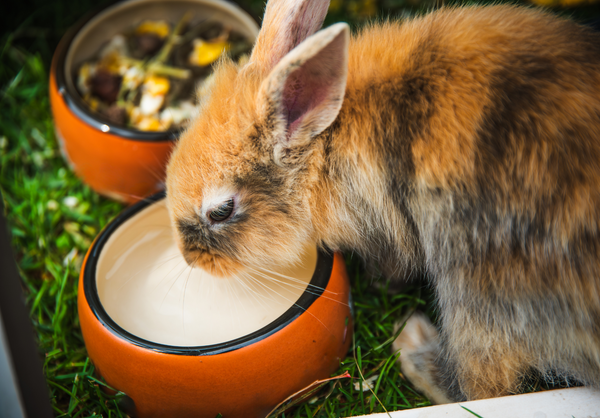 Litter training your newly adopted cat or kitten is a necessary part of cat ownership. Even if an adopted cat has been previously trained, may forget and begin relieving themselves around the house. Kittens will not instinctively know where to go, and adults that may need to be reminded can get their tails twisted. Luckily, we have a few helpful tips to help your training run smoothly!
Litter training your newly adopted cat or kitten is a necessary part of cat ownership. Even if an adopted cat has been previously trained, may forget and begin relieving themselves around the house. Kittens will not instinctively know where to go, and adults that may need to be reminded can get their tails twisted. Luckily, we have a few helpful tips to help your training run smoothly!
Choose Your Location Wisely!
Your cat will not want to go on a long scouting mission to find a place to relieve, especially when training. Choose an easily accessible area for your cat to reach. Do not set up your litter box in an area near where you feed your cat food & water. In the wild, it is natural instinct to defecate away from where they feed. Place in a private, low-traffic area. You probably wouldn't be very comfortable using the toilet in front of everybody! Just like us, cats prefer to do their business in private. Storage rooms, basements & tight corners away from where all the action is are good places to start looking. Remember to keep the door open at all times if your litter is in a room that uses a door! Kitten are known to share litter space, however adult cats can get very territorial. A good rule of thumb is to have one litter box for each cat, PLUS an additional litter box.
Choose The Right Litter Box
If you have space, bigger is always better. A full grown Maine Coon will need a litter box 1.5x larger than its body length, that's a big box! Choose between a covered or uncovered litter, both have their own pros and cons. This may depend all about how large your cat is, where the litter is going, etc. A covered litter will provide privacy and keep litter contained, but will sacrifice space and can trap odors. If you have a small kitten, elderly or physically disabled cat, pick out a litter box with low sides so they may enter and exit with ease. If you are worried about litter being tossed over the sides, Pisces recommends: Petmate Litter Catcher Mat.
Time to Learn
 Your cat will most likely need to relieve itself after sleeping or exercise. Playing with your cat next to the litter box may leave your cat needing to go, in which you can direct or even place your cat into the litter box. If your cat or kitten has never been shown how to use a litter box before, you will have to be the one to show how. To do this, you will have to use the litter box yourself to set an example. Just kidding! Simply use your finger to scoop a small amount of litter on top of the waste to show that it should be covered. Eventually, your cat will take the hint and start covering himself. If your cat continues to eliminate outside of the box, do not yell or get angry. This will not solve anything and cause your cat to be fearful of you. Remember they are not making a conscious effort to disobey the rules (releasing outside the litterbox can be a sign of displeasure or boredom in adult cats, assuming the cat is already trained). Instead, scoop up the waste and place back in the litter as a reminder to your cat. If a habit of eliminating outside the litter box occurs, move the food and water to the problem area to deter them away.
Your cat will most likely need to relieve itself after sleeping or exercise. Playing with your cat next to the litter box may leave your cat needing to go, in which you can direct or even place your cat into the litter box. If your cat or kitten has never been shown how to use a litter box before, you will have to be the one to show how. To do this, you will have to use the litter box yourself to set an example. Just kidding! Simply use your finger to scoop a small amount of litter on top of the waste to show that it should be covered. Eventually, your cat will take the hint and start covering himself. If your cat continues to eliminate outside of the box, do not yell or get angry. This will not solve anything and cause your cat to be fearful of you. Remember they are not making a conscious effort to disobey the rules (releasing outside the litterbox can be a sign of displeasure or boredom in adult cats, assuming the cat is already trained). Instead, scoop up the waste and place back in the litter as a reminder to your cat. If a habit of eliminating outside the litter box occurs, move the food and water to the problem area to deter them away.
Maintaining Your Litter
 Right off the bat, you want to make sure you have the right amount of litter in your box! Too much litter will be messy from your cat kicking the sand to cover the waste. If there is not enough litter, your cat may result in odor problems and eliminating outside of the litter box. Scoop out the solid waste on a daily basis and dispose, Pisces recommends: Litter Locker Design Plus Disposal System. A full clean of the litter box should be done weekly, avoid using harsh chemicals. Refill the box with with clean litter to your cats desired depth. If you use any deodorizer powder, spread and even layer across the bottom of the box before adding the clean litter. Pisces recommends: Deodo Flower Deodorizer. Some deodorizers can cause irritation and allergic reactions in your cat, use a small amount for your first time and gradually increase and look for irritation.
Right off the bat, you want to make sure you have the right amount of litter in your box! Too much litter will be messy from your cat kicking the sand to cover the waste. If there is not enough litter, your cat may result in odor problems and eliminating outside of the litter box. Scoop out the solid waste on a daily basis and dispose, Pisces recommends: Litter Locker Design Plus Disposal System. A full clean of the litter box should be done weekly, avoid using harsh chemicals. Refill the box with with clean litter to your cats desired depth. If you use any deodorizer powder, spread and even layer across the bottom of the box before adding the clean litter. Pisces recommends: Deodo Flower Deodorizer. Some deodorizers can cause irritation and allergic reactions in your cat, use a small amount for your first time and gradually increase and look for irritation.




